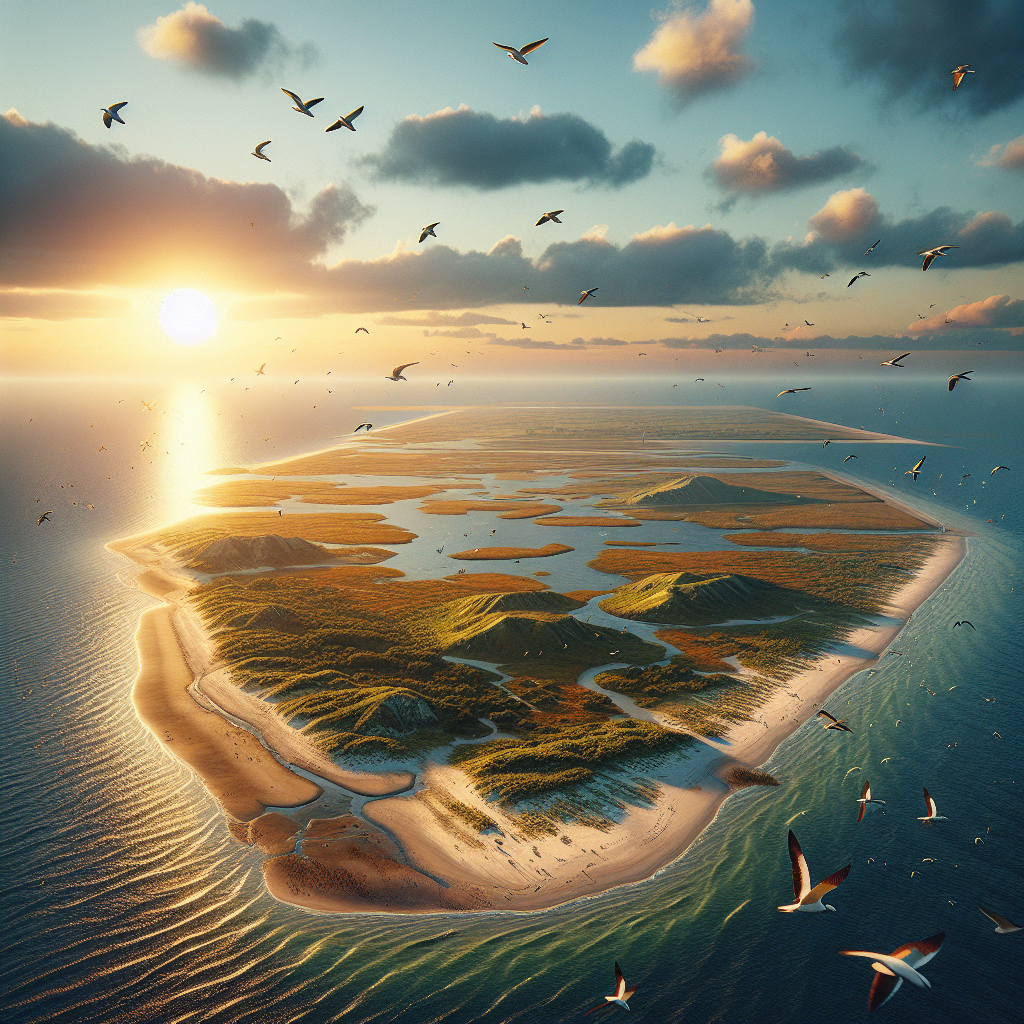The Tiny Island of Süderoog: A Beacon of Sustainability
Imagine a place where the hustle and bustle of modern life fades away, replaced by the gentle sounds of waves and the whisper of the wind. This is Süderoog, a small island located in the Wadden Sea, off the coast of Germany. Owned and inhabited by a couple, Nele Wree and Holger Spreer, Süderoog is not just a picturesque getaway but a model of sustainable living. Since 2013, this duo has been living on the island, managing it as a nature reserve and demonstrating how humans can coexist harmoniously with nature. Their mission is to preserve the island's unique ecosystem while promoting sustainable practices, making Süderoog a fascinating case study in environmental stewardship.
Süderoog is part of the Schleswig-Holstein Wadden Sea National Park, a UNESCO World Heritage site known for its rich biodiversity. The island is home to a variety of wildlife, including seals and numerous bird species. Nele and Holger have taken on the responsibility of protecting these natural inhabitants, ensuring that their activities do not disrupt the delicate balance of the ecosystem. They have implemented eco-friendly practices such as using solar power, composting, and rainwater harvesting, which not only minimize their carbon footprint but also serve as an inspiration for others seeking to live sustainably.
The couple's commitment to sustainability extends beyond their personal lifestyle. They actively engage in educational outreach, welcoming visitors to the island to learn about its unique environment and the importance of conservation. Through guided tours and workshops, they share their knowledge and passion for preserving the natural world. This educational aspect is crucial, as it helps raise awareness about environmental issues and encourages others to adopt more sustainable practices in their own lives.
While the idea of living on a remote island might seem idyllic, it is not without its challenges. Nele and Holger face the constant threat of rising sea levels and extreme weather events, both of which are exacerbated by climate change. These challenges highlight the urgent need for global action to address environmental issues. By showcasing the impact of climate change on their small island, Nele and Holger hope to inspire others to take action and advocate for policies that protect our planet.
Critics might argue that the lifestyle on Süderoog is not practical for everyone. Indeed, not everyone can or wants to live on a remote island, disconnected from the conveniences of modern life. However, the lessons from Süderoog are not about replicating their lifestyle but about adopting sustainable practices that can be integrated into everyday life, regardless of where one lives. Simple actions like reducing waste, conserving water, and supporting renewable energy can make a significant difference when adopted on a larger scale.
Süderoog serves as a reminder of the beauty and fragility of our natural world. It challenges us to rethink our relationship with the environment and consider how our actions impact the planet. Nele and Holger's dedication to sustainability is a testament to the power of individual action in driving change. Their story is a call to action for all of us to take responsibility for our planet and work towards a more sustainable future.
In a world where environmental issues often seem overwhelming, Süderoog offers a glimmer of hope. It shows that with commitment and creativity, it is possible to live in harmony with nature. As we face the challenges of climate change and environmental degradation, the lessons from this tiny island remind us that every action counts and that together, we can make a difference.

